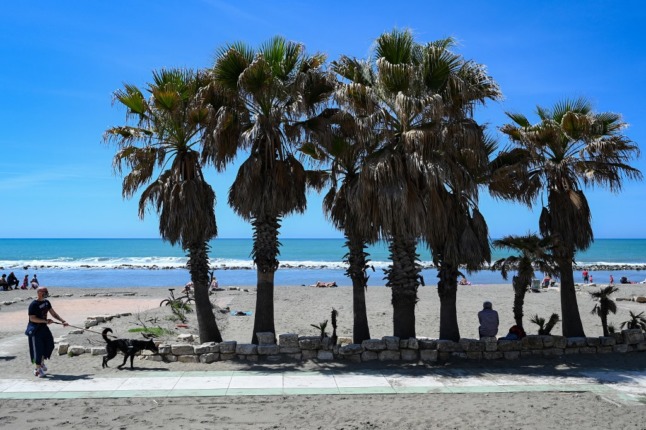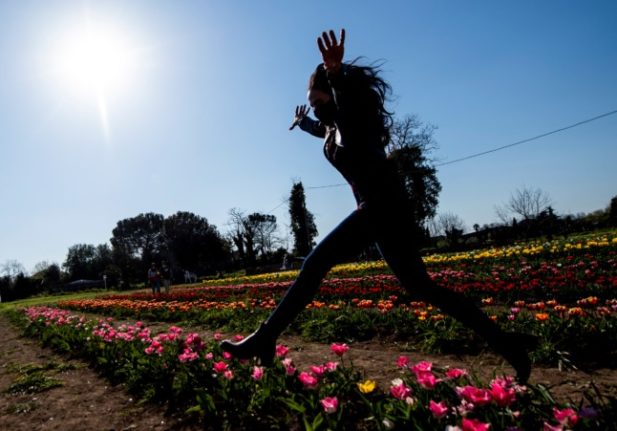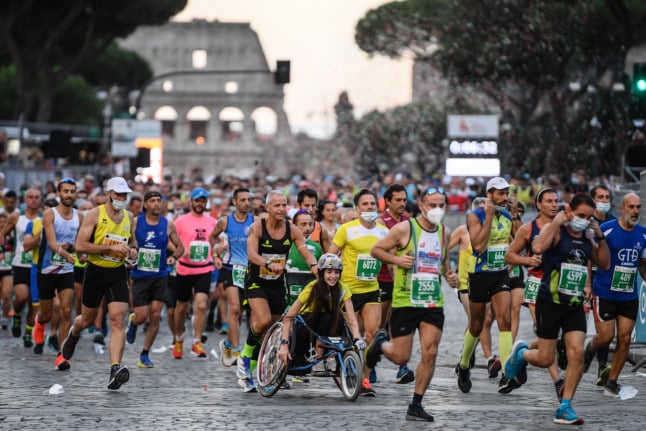Bars and restaurants reopen indoors
From June 1st, bars and restaurants can once again serve customers indoors – as well as outdoors, which is already allowed.
This means businesses which don’t have outside seating can also reopen from this date.
READ ALSO: Indoor dining and later curfew: Italy’s timetable for easing Covid-19 restrictions
And at bars, customers will once again be allowed to drink their coffee at the counter – a common Italian habit, which has been forbidden since early March.
Sports stadiums can also reopen to the public from this date, at 25 percent of their maximum capacity.
Day off for Republic Day
Employees in Italy get the day off work on June 2nd. Republic Day, or the Festa della Repubblica, is a public holiday in Italy, and is seen by many as the beginning of summer and a chance to get away.
READ ALSO: The Italian holiday calendar for 2021

Vaccinations open to all age groups
Everyone aged 16 and over will soon be eligible to book a Covid-19 vaccination appointment, according to the emergency commissioner.
“From June 3rd. all regions and provinces will be given the opportunity to open up to all classes following the national plan,” Italy’s Covid-19 emergency commissioner Francesco Figliuolo stated last week.
He said the vaccination campaign will also soon be extended to 12-to-15-year-olds.
READ ALSO: How do you get an Italian Covid vaccination certificate?
So far, Italy has made vaccination appointments available to people based on age and vulnerability, prioritizing older age groups and those considered at high risk because of medical conditions.
While most regions of Italy are currently still vaccinating older adults and others most at risk, some regional health authorities have already opened reservations to some younger age groups.
It doesn’t look like this change will be helpful to the many foreign residents who do not have an Italian health card (tessera sanitaria), as online appointment booking systems continue to require this. Find out more about what to do if you don’t have the health card here

All of Italy to become a ‘white zone’?
Three Italian regions were declared low-risk coronavirus ‘white’ zones on Monday May 31st, meaning they could drop most of the coronavirus restrictions in place elsewhere in the country.
This includes the evening curfew and the remaining restrictions on opening hours for businesses, including restaurants.
MAP: Which parts of Italy will become Covid-19 ‘white zones’ in June?
From June 6th, several more regions will also turn white, and most if not all of the country is expected to follow later in the month as the health ministry updates the restrictions weekly.
Find out more about the Italian ‘white zone’ rules and requirements here.
Evening curfew moves to midnight
From Monday June 7th, Italy’s current 11pm-5am evening curfew will be pushed back to midnight.
The curfew – intended to discourage social gatherings that could risk new coronavirus infections – is set to be eliminated entirely on June 21st in the so-called ‘yellow’ zones where it is in effect, the government has announced.
Digital ‘green pass’ to launch
A digital version of Italy’s health passport will be available by mid-June, the government has promised.
From June 15th larger gatherings and events like weddings will once again be allowed in Italy, and the ‘green pass’ will be required to attend them.
The health passport is also expected to be rolled out for international travel in June, though there is no definite start date yet.
Currently, the so-called certificato verde or ‘green pass’ is just any official certificate that states you have either been fully vaccinated, have recently tested negative, or have antibodies after recovering from Covid-19.
READ ALSO: What’s the latest on how the EU’s ‘Covid passports’ will work for travellers?
But the plan is to make those details visible in digital form, both online and via the government’s Immuni contact tracing app as well as its IO government admin app.
For those who prefer a hard copy, family doctors and pharmacists will be able to access vaccination records and print out a QR code that patients can scan at border controls or events, just like the digital version.
Right now, you cannot use proof of vaccination to skip quarantine: if you’re travelling to Italy you have to follow the rules on testing and isolation even if you are fully vaccinated.
Find out more about Italy’s ‘vaccine passport’ plans here.




 Please whitelist us to continue reading.
Please whitelist us to continue reading.
Member comments